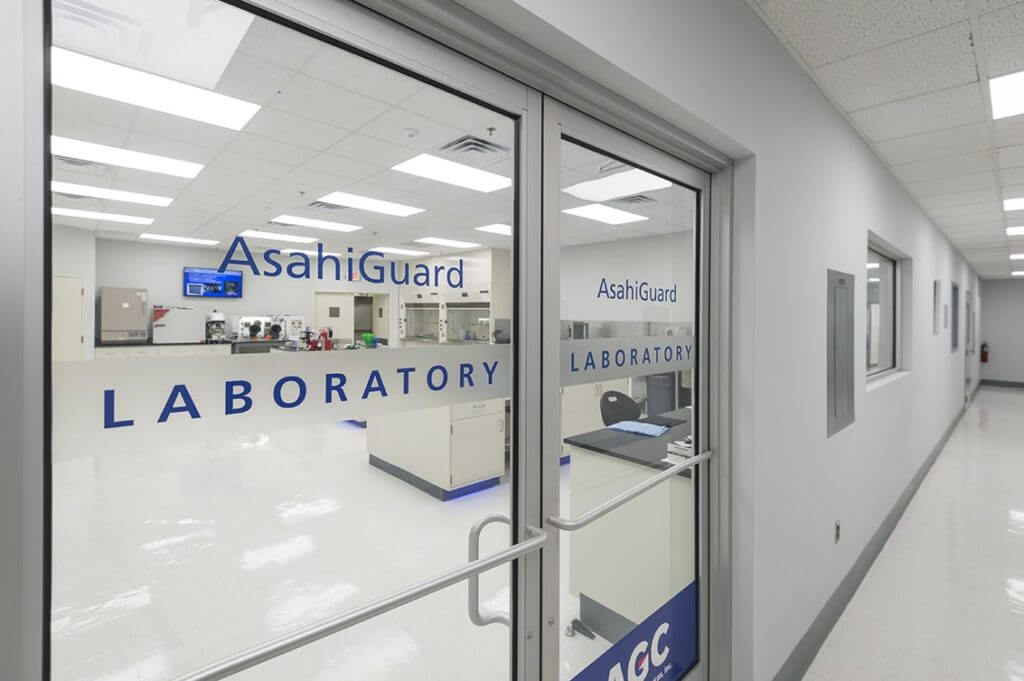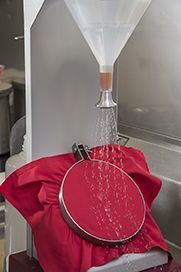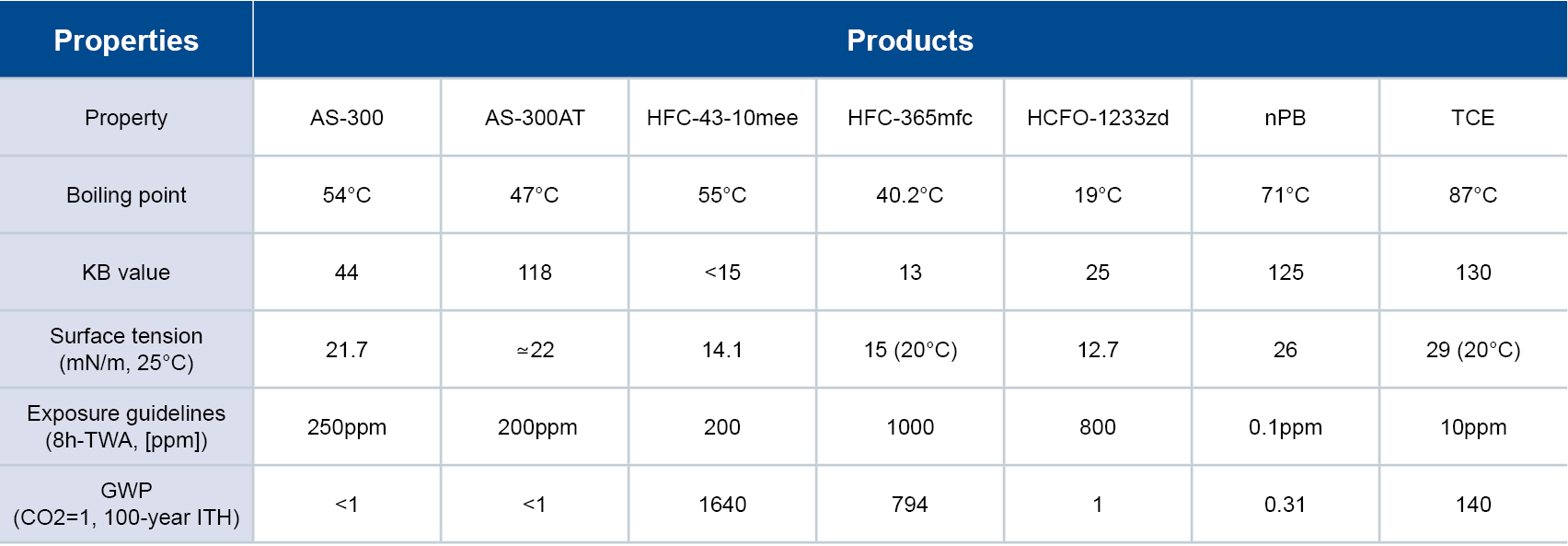AGC Expands its Industry-Leading Water & Oil Repellent Testing Lab
1,800 square foot technical facility supports customer product development in nonwoven, textile,food service, paper, packaging and tile industries
EXTON, Pa., March 14, 2017 – AGC Chemicals Americas Inc. a leading global supplier of high-quality fluorochemicals and materials, has enhanced its AsahiGuard® Water & Oil Repellents testing lab in Exton, Pennsylvania. The lab now contains extensive testing equipment specialized for developing repellents for textiles and nonwovens. AGC has also added equipment and new services for developing repellents for food service, packaging, paper and stone/tile products.

“These new resources help us better support customers in their quest to develop, test and apply innovative products that repel oil, water and dirt,” said Tatsuya Masuda, managing director at AGC Chemicals Americas. “Our focus is on formulating products to customers’ specifications while keeping environmental safety at the forefront.”
New Testing Resources for Textiles and Nonwovens
The AsahiGuard lab supports application services such as fabric preparation, treatment, drying, curing and ironing. The lab’s new performance testing services including water repellency, oil repellency, spray performance, stain release, wash durability, hydrostatic testing, static decay and surface resistivity.
AGC has added the following application equipment and performance testing equipment to the lab which already housed a Mathis pad coater and RK multicoater to provide various coating tests for paper, textiles and nonwovens:
- Rapid stenter/dryer (provides stable drying and curing of coated textile and non-woven samples)
- Electrolux Wascator automatic washing machine (ensures repeatable and reproducible experimental wash cycles for test fabrics)
- Kenmore AATCC-cycle tumble dryer (used for repeatable and reproducible experimental drying cycles for test fabrics)
- AATCC spray tester (provides repeatable characterization of water-resistance in coated fabrics and nonwovens)
- Textest hydrostatic head tester (measures the resistance of coated nonwovens to penetration from high-pressure fluids as might be encountered in the medical professions)
- ETS static decay meter (determines the propensity of coated nonwovens to store static charge for prolonged periods, a measure of comfort and safety of medical clothing in the hospital environment)
- Hioki surface resistivity meter (provides further information on charge management properties of coated non-woven fabrics)

New Testing Resources for Food Service and Packaging
The AsahiGuard laboratory enables customers in the food service and packaging industries to cost-effectively simulate papermaker’s formulations and operations to solve problems and predict performance. AGC added a new oil/water explosion test and a PFI mill and Voith-Valley beater to refine and separate cellulose fibers. These tests are used to attain maximum paper strength for products like fast food packaging, pastry bags, french fry boxes, pet food bags and press-formed bowls and plates.
Additional equipment and testing services for Food Service and Packaging products include:
- British disintegrator (used to re-hydrate cellulose fiber)
- Heidolph high-torque mixers (simulation of paper formulating process)
- TAPPI sheet former (for manufacture of test paper and cardboard sheets)
- Mathis horizontal size press (for post-treatment of paper samples)
- Adirondack contact dryer (intimate surface drying and curing of paper and board samples)
- RP-2 oil resistance testing (prolonged oil resistance at temperature; simulation of pet food packaging)
- TAPPI Kit testing (fast oil resistance and surface tension)
- Gurley Cobb size testing (prolonged water resistance)
- 80 deg. C oil / water exposure testing (prolonged resistance of board substrates at high temperature)
AGC is offering tours of the new facility so that customers, prospects and members of the scientific and local community can see the laboratories and equipment operating in real-time. For more information, contact Kristin Carlin at kr************@*gc.com.
AsahiGuard is a high-performance oil and water repellent with improved environmental and biological profiles. These grades are ideal for treating materials in the automotive, medical, food packaging and architectural tile industries. AsahiGuard imposes no danger to humans, animals, materials or the environment. It is based on short-chain C6 chemistry. C6 fluorinated polymers are proven safe for use on stone and tile, contain no perfluorooctanoic acid (PFOA) or perfluorooctane sulfonic acid (PFOS) or their precursors, at detectable limits, and cannot break down to form PFOA or PFOS.
About AGC Chemicals Americas, Inc.
AGC Chemicals Americas is a global subsidiary of AGC Inc., a multinational corporation and one of the world’s largest manufacturers of glass, electronic displays and chemical products. Headquartered in Exton, Pennsylvania, including a state-of-the-art technology center, AGC Chemicals Americas maintains manufacturing operations in nearby Thorndale, Pennsylvania, a satellite sales office in Guaratingueta, Brazil, and warehouses located throughout North America. www.agcchem.com
 English
English 




